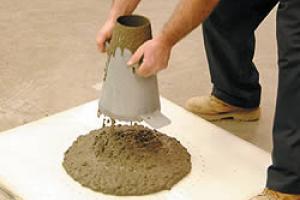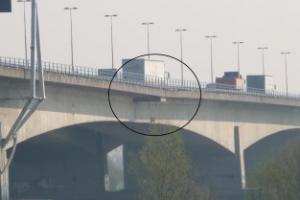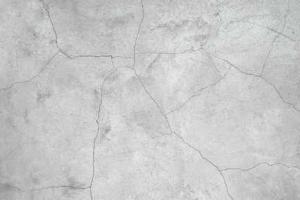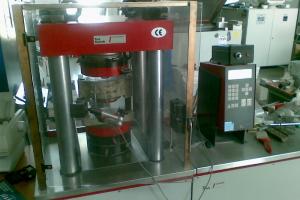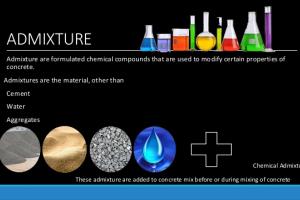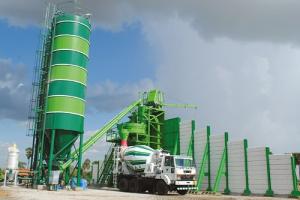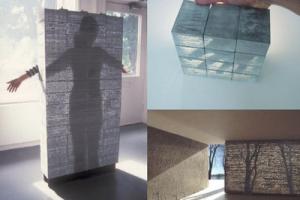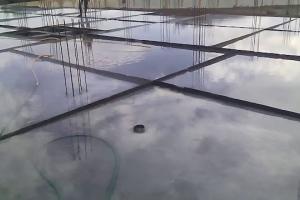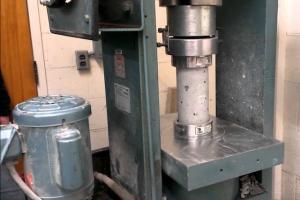Hot Weather Concreting | Definition, Problems Effects

Definition
While hot weather conditions are commonly encountered in summer, combinations of high temperatures, winds and low humidity could result in conditions leading to problems with concrete placement and finishing at any time. ACI 305 “Hot Weather Concreting” defines hot weathers as any combination of the following conditions that tends to impair the quality of the freshly mixed or hardened concrete:
-
High ambient temperature
-
High concrete temperature
-
Low relative humidity
-
Wind speed
-
Solar radiation
Problems in Hot Weather Concreting
The success of many hot-weather concreting operations depends on the steps taken to slow the cement hydration reactions within the concrete and to minimize the rate of evaporation of moisture from the freshly mixed concrete. Potential concrete problems in hot weather are likely to include:
- Increased water demand
- Increased rate of slump loss
- Increased rate of setting
- Increased tendency for plastic-shrinkage cracking
- Increased difficulty in controlling entrained air content
- Decreased 28-day and later strengths
- Increased tendency for differential thermal cracking
- Greater variability in surface appearance
- Increased permeability
Effects of Hot weather on concrete:
Hot weather imposes the harmful effects on the following properties of concrete:
- Reduce the strength of the concrete.
- Reduce the dimensional stability of the concrete.
- Reduce the resistance to weathering of the concrete.
- Cracks due to plastic shrinkage.
To prevent the above mentioned harmful effects of the hot weather on the quality of concrete the temperature of concrete shall not exceed the temperature shown in the table below:
Maximum allowable Concrete temperature during placement of concrete
| Relative humidity(%) during time of concrete Placement | Maximum allowable concrete temperature(degree centigrade) |
|
Greater than 60 |
33 C |
|
40-60 |
30 C |
|
Less than 40 |
27 C |
High temperatures accelerate the hardening of concrete and more water is generally required to maintain workable consistencies. If the water-cement ratio is not maintained by adding additional cement, strength and durability will be reduced. For example, if the temperature of concrete is increased from 50 degrees F (10ºC) to 100 degrees F (38ºC), about 33 pounds (roughly 15 liters) of additional water is needed per cubic yard of concrete to maintain a three-inch slump. If the water content of concrete is increased without increasing the cement content, the strength and other properties of concrete are adversely affected.
High water contents also mean greater drying shrinkage. Furthermore, setting is accelerated which shortens the time within which the concrete can be handled and finished. Curing concrete requires that it be kept damp so that hydration can be completed, therefore, it cannot be allowed to dry too rapidly.
Keeping equipment such as mixers, chutes, wheelbarrows, etc. in the shade or covered with wet burlap will reduce the effect of the sun's heat. Forms, reinforcing steel, and subgrade should be sprinkled with cool water just before the concrete is placed. Wetting down the area cools the surrounding air and increases the relative humidity. This not only reduces the temperature but also minimizes the evaporation of water from the concrete.
Aggregates have a pronounced effect on fresh concrete temperature because they represent 60 to 80 percent of the total weight of concrete. Stockpiles should be shaded from the sun and kept moist by sprinkling. Since evaporation is a cooling process, sprinkling provides effective cooling, especially when the relative humidity is low. Cement temperature has only a minor effect on the temperature of freshly mixed concrete because it represents a relatively small percentage of the total mixture.
Concrete Curing is a hydration process and requires water to be present. Forms should be sprayed with water to keep them damp, or they will absorb part of the mixing water. As soon as the concrete has set sufficiently to prevent marring the surface, it should be covered with straw, burlap, or other materials such as sand and kept moist for several days. Covering with polyethylene plastic sheets or using curing compounds helps in preventing evaporation by air or wind. Anything to prevent rapid dehydration will be helpful.
High ambient temperature cause low relative humidity due to which loss of water from concrete is very high which result in high water requirement for mix preparing.
Precautions in hot weather concrete pouring:
To control the high concrete temperature following steps may be taken:
-
Schedule concreting. The concrete can be scheduled to time when the temperature is not high e.g. in summer it can be schedule to night or early morning
-
Material and mix proportions: use material and mix design proportion having good weather resistance e.g. select sand having low specific heat.
-
Covered environment: The concrete can be done in a covered environment.
-
Chilling: The chilling of aggregate can be done by watering or keeping them covered.
-
Efficient work force: employ efficient workforce and machinery to improve the handling.
-
Use of low heat cement: Use low heat cement.
Temperature of Concrete:
The formula to calculate temperature of concrete is given as:
OR
Where Ta, Tc,Tw & Twa and Ma, Mc, Mw, Mwa are temperature and mass of aggregate, cement, water and water content in aggregate respectively. Mi is the mass of ice.
|
Material |
Mass (kg) |
Specific Heat (kJ/kg°C) |
Initial Temperature (°C) |
Heat to vary Temperature by 1°C (kJ) |
Total Heat (KJ) |
|
Cement |
300 |
0.92 |
66 |
276 |
18216 |
|
Water |
150 |
4.184 |
25 |
627.6 |
15690 |
|
Aggregate |
1800 |
0.92 |
25 |
1656 |
41400 |
|
Total |
2559.6 |
75306 |
|||
To decrease the temperature of concrete by 1 ºC, decrease the temperature of any one of the following by:
Cement OR
Water OR
Aggregate
Sometimes ice is used to decrease the temperature of concrete
|
Material |
Mass (kg) |
Specific Heat (kJ/kg°C) |
Initial Temperature (°C) |
Heat to vary Temperature by 1°C (kJ) |
Total Heat (KJ) |
|
Cement |
300 |
0.92 |
66 |
276 |
18216 |
|
Water |
110 |
4.184 |
25 |
460.24 |
11506 |
|
Aggregate |
1800 |
0.92 |
25 |
1656 |
41400 |
|
Ice |
40 |
4.184 |
0 |
167.36 |
0 |
|
Heat of Fusion=335 kJ/kg |
-13400 |
||||
|
Total |
2559.6 |
57722 |
|||
Measures to be taken during the Hot weather concrete pouring:
- Schedule a pre placement conference to discuss the general concrete placement check list Concrete Placement Checklist and the current plan of placement concrete in hot weather.
- Place the concrete early morning in the day time or late afternoon when the ambient temperature is low.
- Keep Concrete plant, mixers and vibrators in a good operating condition, because intermediate stoppage of concrete due to the breakdown of the equipment can be much more serious under hot weather condition than in moderate weather.
- Keep the stocks of fine and coarse aggregate as cool as possible by making shades on the stocks or sprinkling of water on the stocks.
- Painting of mixers white.
- Cooling of mixers by sprinkling of water before discharging of concrete from plants to mixers.
- Cement hydration, temperature rise, slump loss, aggregate grinding and gain of air content all occur with the passage of time while the concrete is in the mixer, so the time elapsed between the start of mixing and start of placement should be minimized.
- To minimize the time, a good communication between the job site and plant should be established and dispatching of the mixers and rate of concrete placement should be well coordinated. If the mixers are needed to deliver the concert through a rout with a Major volume of traffic the placement should be scheduled during period of lower traffic load.
- Paint the water tanks with white color.
- Replace some percentage of the mixing water by ice. The general influence of the temperature of concrete ingredients on concrete temperature is calculated from the equation bellow.
Without ice (in. – lb and SI units)
T=
With ice (SI units)
T=
Where
Ta = temperature of aggregate
Tc = temperature of cement
Tw = temperature of batched mixing water from normal supply excluding ice
Ti = temperature of ice. (Note: The temperature of free and absorbed water on the aggregate is assumed to be the same temperature as the aggregate. All temperatures are in F or C.)
Note: For correct proportioning, the ice must be weighed. Cooling with block ice involves the use of a crusher/slinger unit, which can finely crush a block of ice and blow it into the mixer.
11. Keep the slump on the high side( 7.5 to 10 cm). 12. Proper curing as per the project specification 13. Usage of admixtures: Retarding admixtures meeting ASTM C 494, Type D requirements have both water reducing and set retarding properties, and are used widely under hot weather conditions. They can be included in concrete in varying proportions and in combination with other admixtures so that, as temperature increases, higher dosages of the admixture may be used to obtain a uniform time of setting. Their water reducing properties largely offset the higher water demand resulting from increases in concrete temperature. Because water reducing retarders generally increase concrete strength, they can be used, with proper mixture adjustments, to avoid strength losses that would otherwise result from high concrete temperatures (Gaynor et al 1985; Mittelacher 1985 and 1992). Compared with concrete without admixture, a concrete mixture that uses a water reducing and retarding admixture may have a higher rate of slump loss.
Note: The number of the above listed precautions to be taken depends on the type of construction, temperature of the ambient air, low relative humidity, wind speed, concrete temperature and others. Few, or all of the above precaution will be taken at a time based on the neediness.
References:
- ACI-305
- ACI 207.1R
- ACI 224R



